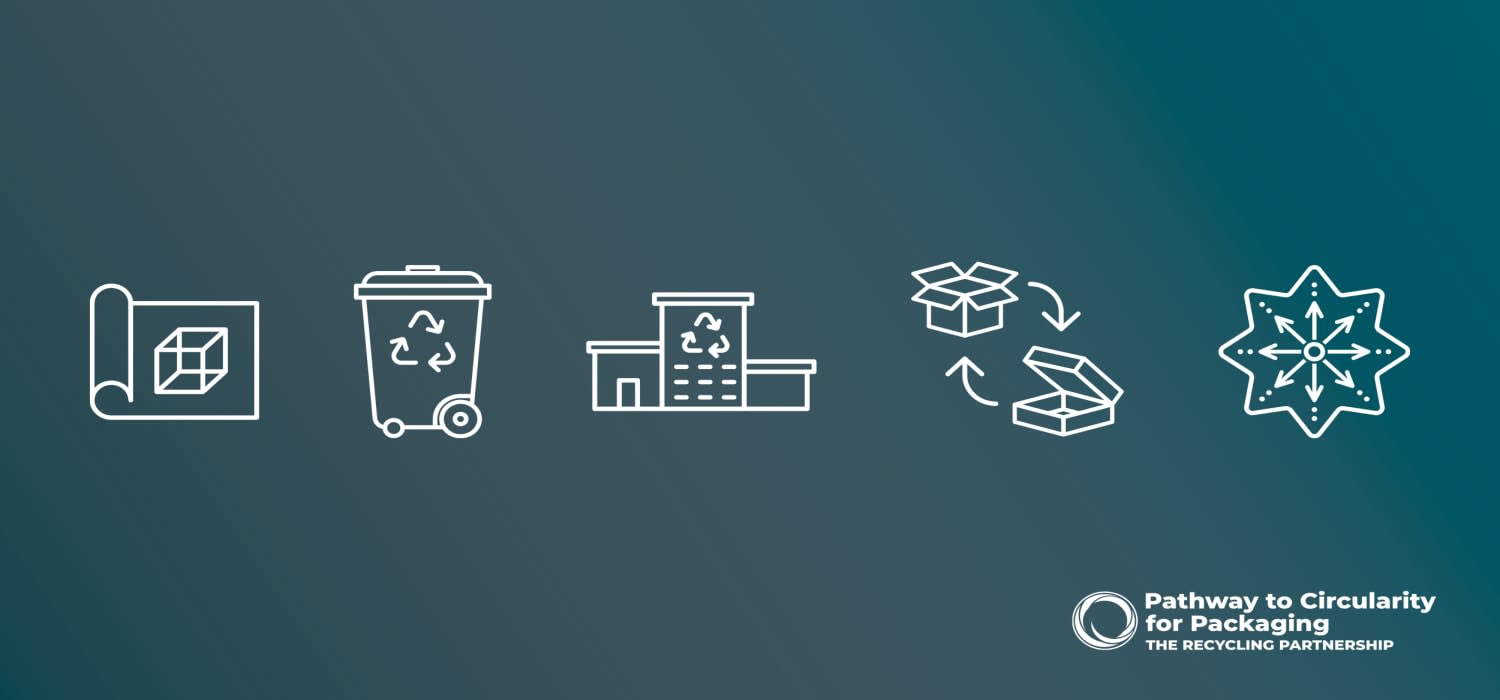
Today the Pathway to Circularity for Residential Recycling Framework (Framework) is available for brands, retailers, packaging manufacturers, MRFs, communities, policymakers and others to use through Packaging Assessment Tool (Tool).
While recyclability messaging (on packages, community educational materials and websites) plays an invaluable role in helping people understand what to recycle, there has never been one recyclability determination source for brands, MRFs and communities alike – until now. This Tool guides users through the Framework’s step-by-step process to assess packaging recyclability. Developed with real industry knowledge and experience from 35 industry leaders representing the entire recycling value chain (Circularity Council), the Framework builds on current industry resources (such as the FTC Green Guides, Association of Plastic Recyclers’ Design Guides® and How2Recycle). The Framework was vetted through a public comment process which resulted in 750 individual comments from 70 organizations demonstrating the critical need for the Framework, and industry desire for these guidelines.
This free Tool offers step-by-step guidelines of what is required for packaging and materials to be considered recyclable in the U.S. The interactive Framework addresses different stages of the packaging journey through five building blocks: design for recyclability, recyclability prevalence, access and adoption, capture journey, and packaging fate. Upon completion you’ll reach a clear understanding as to whether package can navigate today’s recycling system and if not, what actions can be taken to improve the package and to advance the system.
The Framework will provide much-needed stability for long-term decisions, while evolving to reflect the current system. There are still some elements, such as design guides and protocols, in development with partners. To build consistency, we are proud to work with industry associations, including the Aluminum Association, the American Forest & Paper Association (AF&PA), the Association of Plastic Recyclers (APR), the Carton Council, the Can Manufacturers Institute (CMI), the Glass Packaging Institute (GPI) and the Institute of Scrap Recycling Industries (ISRI), to reference existing guidance. The Tool interface will evolve to become a fully digital platform that combines the power of our national database and the Framework to provide even clearer, actionable guidelines. That platform will include an ‘on-ramp’ to recognize packages that are in active transition toward widespread recyclability.
The Partnership created this Framework to inspire and deliver new depth to industry discussions about the factors that shape recycling – we encourage you to take part in this important conversation. Reach out with questions or feedback as you work your way through the Tool. Subscribe to our mailing list for future updates on the digital platform. We believe there’s only one way to build the system of the future – together.
At The Recycling Partnership, we are solving for circularity. We mobilize people, data, and solutions across the value chain to unlock the environmental and economic benefits of recycling and a circular economy. We work on the ground with thousands of communities to transform underperforming recycling programs; we partner with companies to achieve packaging circularity, increase access to recycled materials, and meet sustainability commitments; and we work with government to develop policy solutions to address the systemic needs of our residential recycling system and advance a circular economy. We foster public-private partnerships and drive positive change at every step of the recycling and circularity process. Since 2014, we have diverted 500 million pounds of new recyclables from landfills, saved 968 million gallons of water, avoided more than 500,000 metric tons of greenhouse gases, and driven significant reductions in targeted contamination rates.
